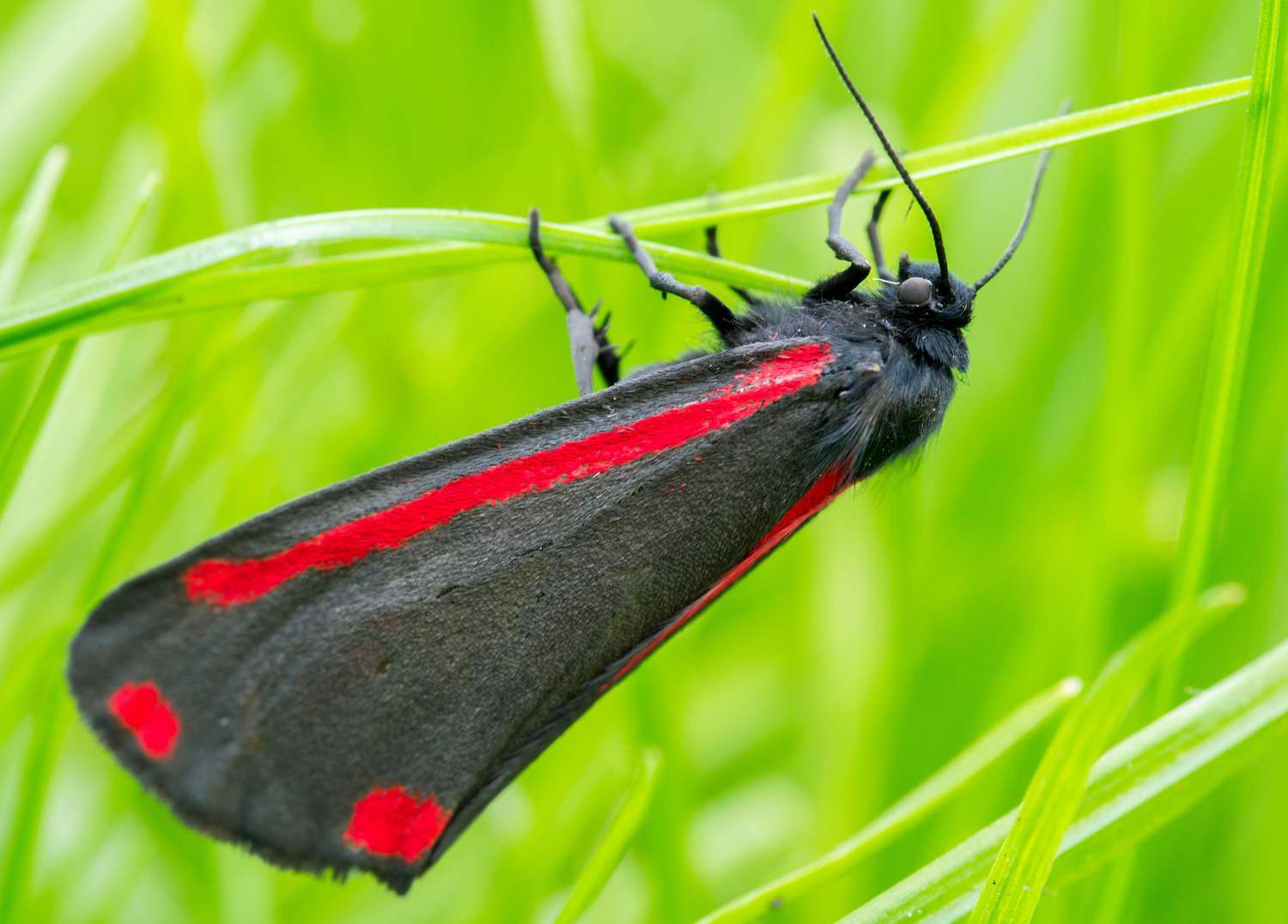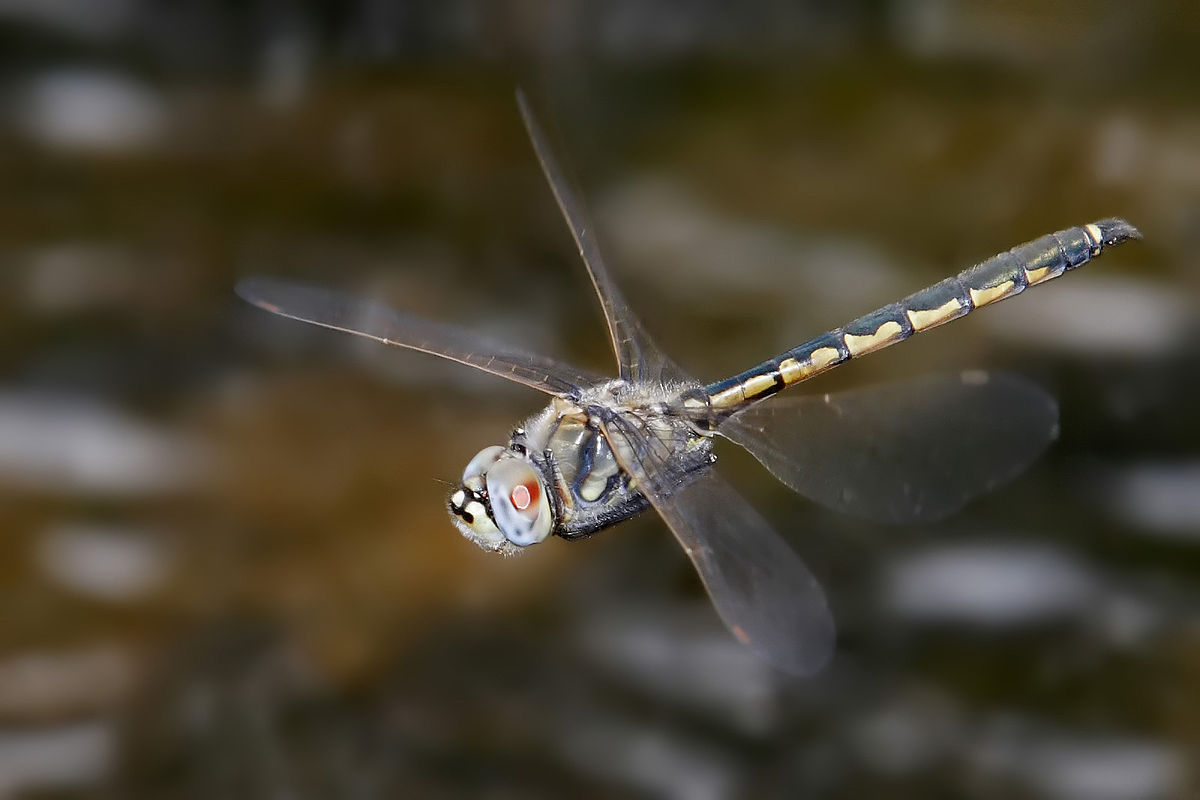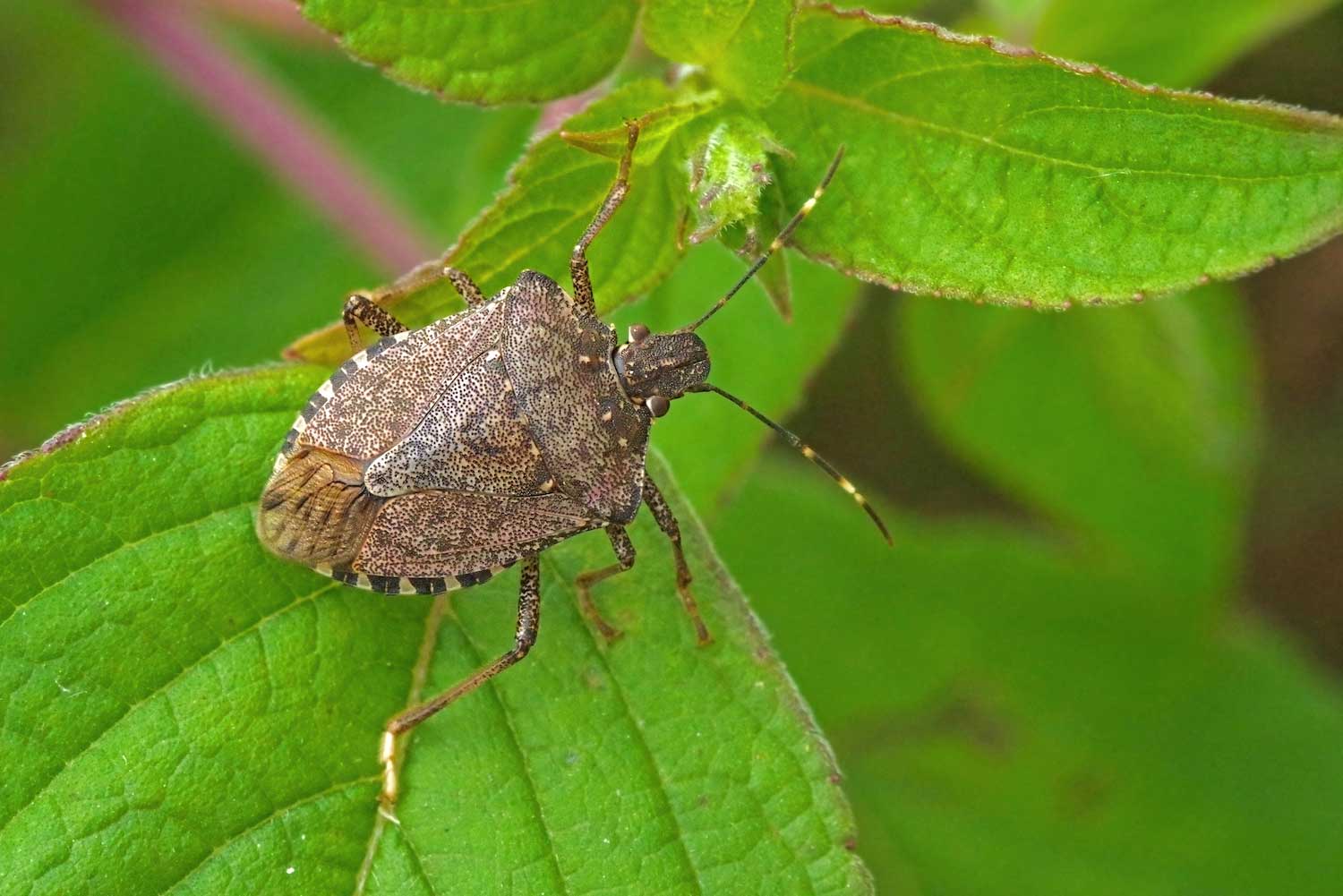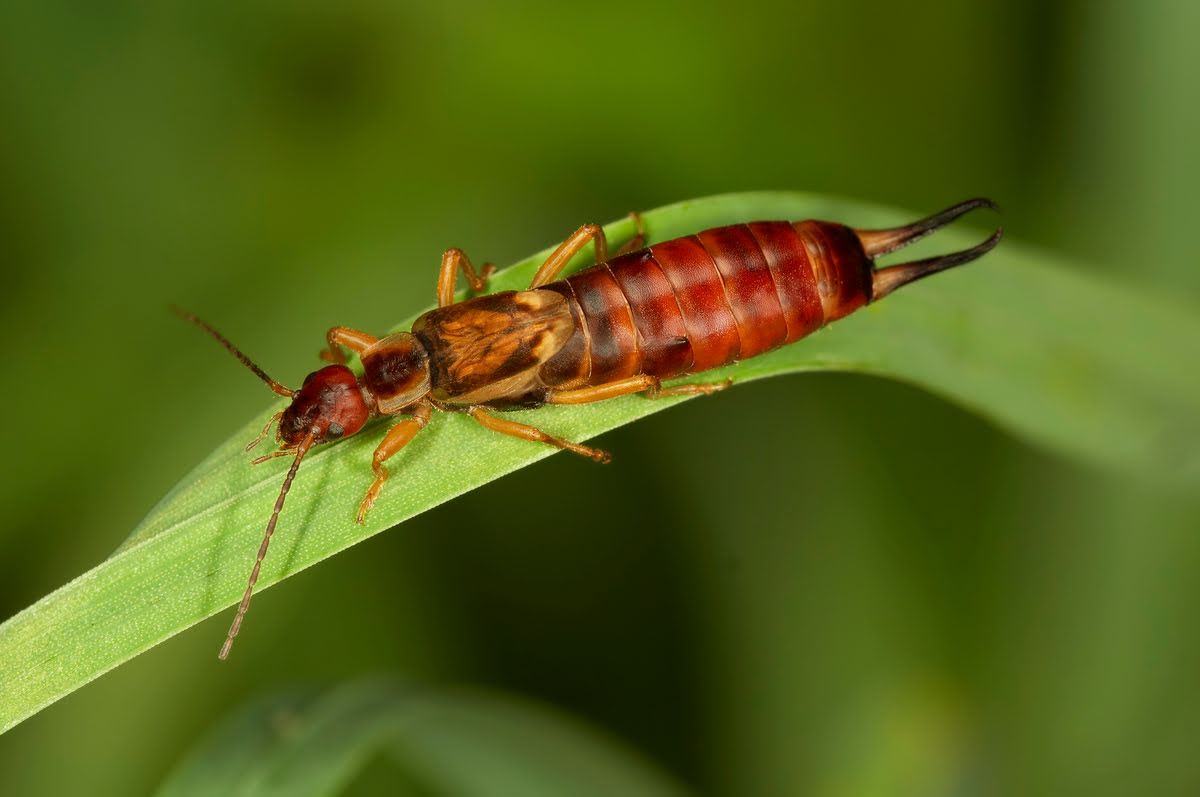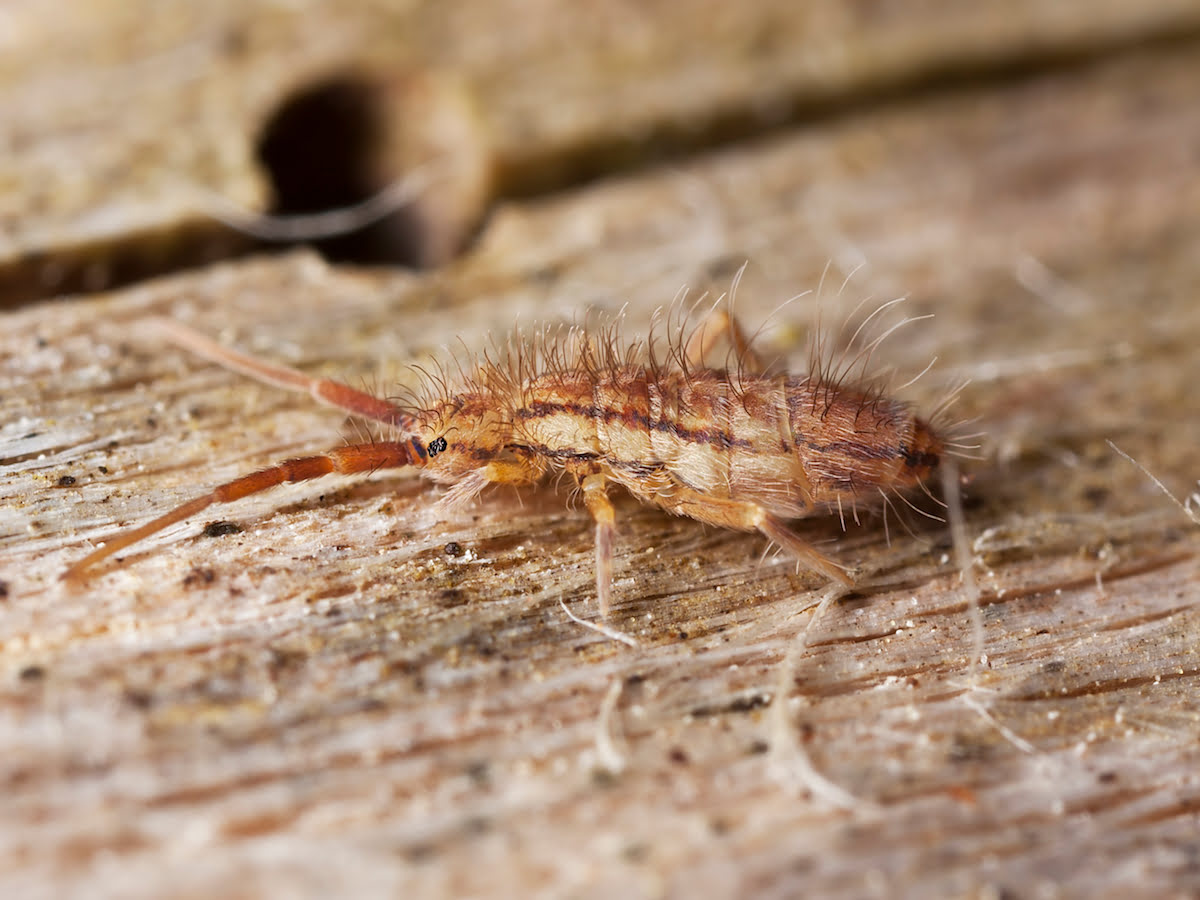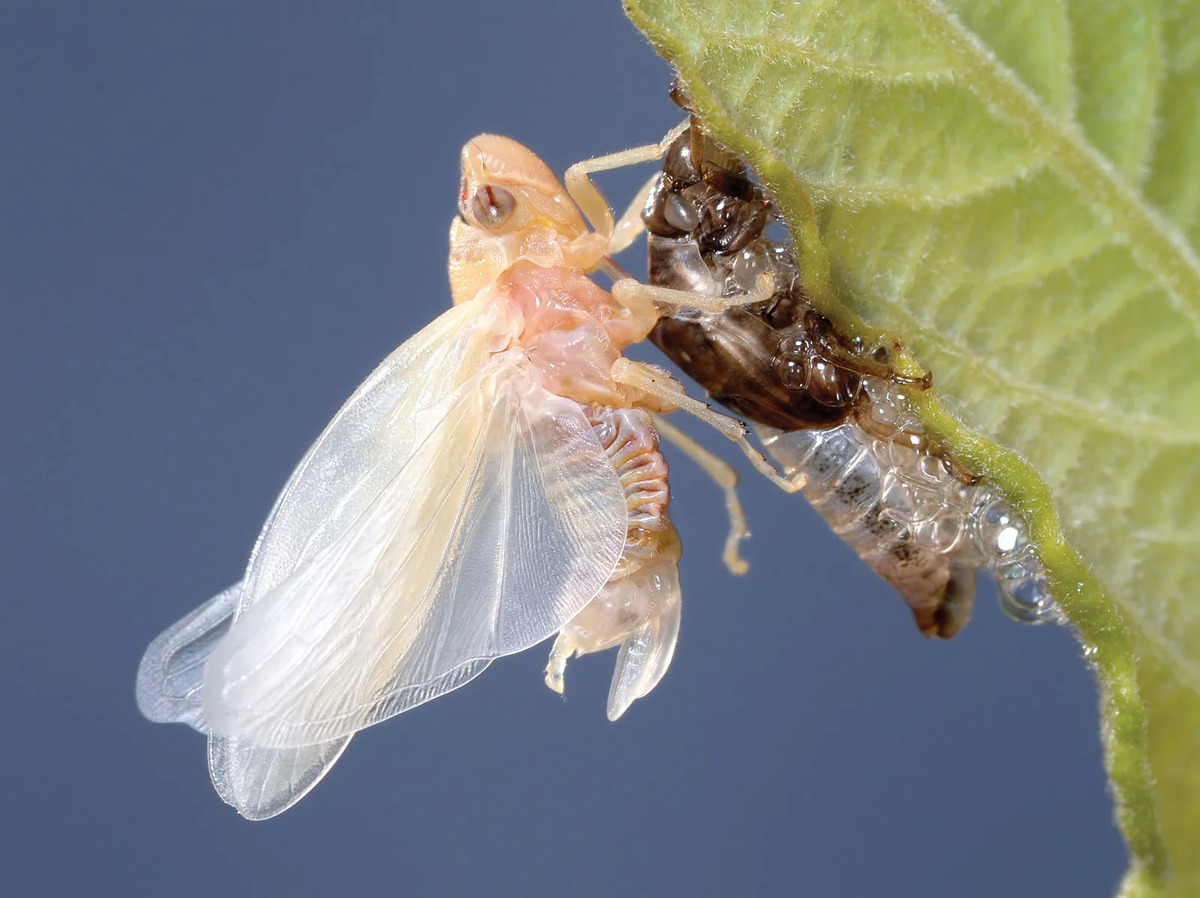Home>Gardening News and Trends>Latest News>What Waves Are Utilized By Insects To Locate Nectar


Latest News
What Waves Are Utilized By Insects To Locate Nectar
Published: November 29, 2023
Discover the Latest News on the Waves Insects Use to Find Nectar. Stay Updated with the Most Recent Insights on Insect Behavior and Nectar Location.
(Many of the links in this article redirect to a specific reviewed product. Your purchase of these products through affiliate links helps to generate commission for Chicagolandgardening.com, at no extra cost. Learn more)
Table of Contents
- Introduction
- Visual Waves
- 1. The role of visual waves in insect navigation
- 2. How visual waves are utilized by insects to locate nectar
- Olfactory Waves
- 1. The importance of olfactory waves in insect foraging
- 2. How olfactory waves help insects in finding nectar sources
- Tactile Waves
- 1. The significance of tactile waves in insect nectar detection
- 2. How insects use tactile waves to locate nectar
- Acoustic Waves
- 1. The use of acoustic waves in insect nectar foraging
- 2. How insects exploit acoustic waves to find nectar
- Conclusion
Introduction
Insects are fascinating creatures, well-known for their ability to navigate complex environments in search of food sources. When it comes to locating nectar, a vital source of energy for many insect species, they employ a variety of sensory waves to guide them towards their target. These waves can be visual, olfactory, tactile, or even acoustic in nature.
The ability to detect and locate nectar sources is crucial for the survival and reproduction of insects. Nectar provides insects with the necessary carbohydrates and nutrients required for energy production and growth. Therefore, understanding how insects utilize different waves in this process is of great importance.
Each type of wave serves a specific purpose in helping insects find nectar. Visual waves allow insects to navigate the surrounding environment by perceiving colors, shapes, and patterns. Olfactory waves enable them to detect and discern the scent of nectar from potential sources. Tactile waves help insects locate nectar through physical contact with surfaces or structures. Acoustic waves allow insects to communicate and pinpoint the location of nectar-producing flowers by listening to specific sounds or vibrations.
By harnessing these sensory waves, insects demonstrate a remarkable level of adaptability and efficiency in finding nectar. Understanding the role of each wave type can provide valuable insights into their foraging strategies and ecological interactions. Furthermore, this knowledge can be applied to various fields, including agriculture, pollination, and pest control.
In this article, we will explore the different types of waves utilized by insects to locate nectar. We will delve into the specific mechanisms and advantages of each wave type, highlighting their significance in the foraging behavior of insects. So, let’s dive into the fascinating world of insect sensory waves and discover how these tiny creatures navigate their way to the sweet rewards of nectar.
Visual Waves
Visual waves play a crucial role in insect navigation and are instrumental in helping them locate nectar-rich flowers. Insects have highly developed visual systems that enable them to perceive a wide range of colors, shapes, and patterns.
When searching for nectar, insects rely on visual cues to identify flowers. They can detect variations in color, brightness, and even ultraviolet light, which is often invisible to humans. This allows them to distinguish flowers based on their visual attractiveness and nectar availability.
Visual waves help insects establish landmarks and orient themselves in their environment. By observing the surrounding landscape and recognizing familiar visual patterns, they can memorize the location of nectar sources and navigate back to them efficiently.
Insects also take advantage of visual waves to identify the shape and structure of flowers. Different flower species have distinct visual characteristics, such as the arrangement of petals or the presence of specific markings. Insects have evolved to recognize these features and use them as indicators of potential nectar-filled blossoms.
Moreover, visual waves aid insects in detecting movement. Flying insects, such as bees and butterflies, can perceive the motion of flowers swaying in the wind or the flapping of insect wings. This dynamic visual input helps them pinpoint flower locations and assess their suitability for nectar collection.
Overall, visual waves provide insects with invaluable information for locating nectar-rich flowers. By leveraging their visual acuity and sensitivity to color, shape, and movement, insects can efficiently navigate their surroundings, recognize specific flowers, and secure their energy supply.
1. The role of visual waves in insect navigation
Visual waves play a crucial role in insect navigation, providing them with important cues for locating nectar sources. Insects rely on visual information to establish landmarks, assess the surrounding environment, and navigate efficiently.
One of the primary functions of visual waves in insect navigation is the recognition of landmarks. Insects, such as bees, ants, and wasps, are known to have impressive spatial memory. They can visually memorize specific objects, patterns, or landmarks in their environment and use them to orient themselves and find their way back to known nectar sources. By recognizing and recalling visual cues, insects can navigate complex landscapes and return to promising feeding grounds.
In addition, visual waves help insects assess distances and trajectories. By observing the relative positions of objects or landmarks, insects can estimate distances accurately and plan their flight path accordingly. This is especially important for insects with a limited flight range, as they need to prioritize the most rewarding nectar sources within their foraging radius.
Visual waves also enable insects to detect changes in their surroundings. They can notice alterations in vegetation, such as the blooming of flowers or the emergence of new obstacles. This allows insects to adjust their navigation and actively seek out potential nectar sources that were not present in their previous foraging trips.
Furthermore, visual waves aid insects in recognizing specific flower characteristics. Insects are attracted to certain flower shapes, colors, and patterns, which signify the presence of nectar. They can visually discriminate between different types of flowers and prioritize the ones that offer the highest rewards. This visual discrimination helps insects optimize their foraging efficiency and energy expenditure.
Overall, visual waves play a crucial role in helping insects navigate their environment and locate nectar sources. By relying on visual cues, insects can establish landmarks, assess distances, detect changes, and identify rewarding flowers. These abilities enable them to efficiently find nectar, ensuring their survival and contributing to the pollination of flowering plants.
2. How visual waves are utilized by insects to locate nectar
Insects have evolved various strategies to utilize visual waves in their quest to find nectar. These strategies allow them to effectively locate and exploit nectar-rich flowers, ensuring a steady food supply for their survival and reproduction.
One way insects use visual waves is by relying on color perception. Many flowers have evolved vibrant and eye-catching colors to attract pollinators, such as bees and butterflies. Insects have specialized photoreceptor cells that can detect a wide range of colors, including ultraviolet light. By recognizing specific colors, insects can quickly identify flowers that are likely to contain nectar.
Shape recognition is another essential aspect of how insects utilize visual waves. Different flower species have characteristic shapes that insects have learned to associate with nectar availability. For example, tubular flowers often signal a rich source of nectar, as they require pollinators with long tongues to access it. By visually recognizing the shapes of different flowers, insects can select the most rewarding ones for nectar collection.
Movement detection is also vital for insects when locating nectar sources. Insects can perceive the movement of flowers caused by wind or the fluttering of other insects. This dynamic visual input helps insects spot and identify flowers that are actively producing nectar, indicating a fresh and desirable food source.
Visual waves also help insects in distinguishing between flower parts. They can visually locate the “nectar guides” present on some flowers, which are specific patterns or color markings that direct the insect towards the nectar-producing region. By following these visual cues, insects can efficiently locate and access the nectar within the flowers.
Furthermore, visual waves assist insects in location memory. After discovering a rewarding nectar source, insects can visually memorize distinct visual landmarks surrounding the flower. This allows them to navigate back to the same flower on subsequent foraging trips, saving time and energy by avoiding unnecessary searches.
By effectively utilizing visual waves, insects can optimize their foraging efficiency and ensure a steady supply of nectar. This symbiotic relationship between flowers and pollinating insects is crucial for the successful reproduction of both plant and insect species.
Olfactory Waves
Olfactory waves, or scent waves, are another important sensory mechanism utilized by insects to locate nectar sources. Insects have a highly developed sense of smell, allowing them to detect and distinguish various scents in their environment.
When it comes to finding nectar, insects rely on their olfactory abilities to identify the specific scent emitted by nectar-producing flowers. Each flower species produces a unique combination of volatile compounds that create a distinct aroma. Insects have evolved to detect and follow these scented trails to locate reliable sources of nectar.
Olfactory waves enable insects to track the odor plumes emitted by flowers. These plumes disperse in the air, forming a trail that insects can follow to reach a nectar-producing flower. By navigating along these scent trails, insects can efficiently find and access the floral rewards they seek.
In addition to detecting the scent of nectar, insects can also rely on olfactory waves to evaluate the quality and quantity of the available nectar. The intensity of the scent can provide information about the concentration and freshness of the nectar, allowing insects to make informed decisions about which flowers to prioritize for feeding.
Moreover, olfactory waves play a crucial role in long-distance navigation. Insects, such as bees and moths, can detect scent markers left by other individuals of their species or by conspecific colonies. These pheromone trails guide them towards areas with abundant nectar sources, ensuring a successful foraging expedition.
Overall, olfactory waves are a vital sensory mechanism for insects in their search for nectar. By detecting and following scent trails, insects can efficiently locate and assess the quality of nectar-rich flowers, ensuring a sufficient food supply for their survival and reproductive success.
1. The importance of olfactory waves in insect foraging
Olfactory waves play a crucial role in insect foraging, providing valuable information to guide them towards nectar sources. Insects rely on their sense of smell to detect and assess the availability, quality, and location of nectar-rich flowers.
One of the key reasons why olfactory waves are important in insect foraging is the ability to detect the specific scent emitted by nectar-producing flowers. Each flower species has a distinct chemical composition that produces a unique aroma. Insects have evolved the sensory ability to detect these scents, allowing them to discriminate between flowers and focus their foraging efforts on the most rewarding ones.
Insects rely on olfactory waves to identify not only the presence but also the quality of nectar. The scent intensity can provide information about the concentration of sugars and other nutrients in the nectar. Insects are more likely to choose flowers with stronger and more desirable scents, as they indicate a higher quality nectar source. This helps ensure that insects obtain the necessary nutrients for their survival and reproduction.
Olfactory waves also play a crucial role in long-distance navigation and location memory. Insects, such as bees, can detect and follow scent trails left by other foraging individuals. These scent trails act as directional markers, guiding the insects towards areas where abundant nectar sources are present. Similarly, insects can remember the scent of previously visited rewarding flowers, allowing them to navigate back to these locations and save time and energy in their foraging activities.
Furthermore, olfactory waves enable insects to respond to changes in nectar availability. When flowers are blooming or nectar sources are replenished, the scent concentration in the surrounding air increases. Insects can detect these changes in scent levels and adjust their foraging behavior accordingly, directing their attention and efforts towards the most recently replenished nectar sources.
Overall, the importance of olfactory waves in insect foraging cannot be overstated. The ability to detect and interpret the scent of nectar-rich flowers allows insects to efficiently locate and assess the quality of available nectar. By relying on olfactory cues, insects maximize their foraging efficiency, ensuring a steady food supply for their survival and reproduction.
2. How olfactory waves help insects in finding nectar sources
Olfactory waves play a critical role in helping insects find nectar sources. These scent-based cues provide valuable information that guides insects towards the most rewarding flowers for their nourishment. Let’s explore how olfactory waves facilitate the search for nectar by insects.
Insects utilize olfactory waves to detect the unique scents emitted by nectar-producing flowers. Each flower species has its own chemical signature, creating a distinct aroma that attracts specific pollinators. Insects can differentiate these scents, allowing them to identify the flowers that offer the precious reward of nectar.
Once insects detect the scent of nectar, they can follow the direction of increasing scent concentration to locate the source. Olfactory waves disperse in the air, creating a scent trail that insects can navigate along. By following this trail, insects can precisely track down the flowers that are likely to contain the sweet nectar they seek.
Furthermore, olfactory waves enable insects to assess the quality of the available nectar. The intensity and composition of the scent can provide valuable information about the concentration of sugars and other nutrients in the nectar. Insects are naturally drawn to flowers with stronger scents, indicating a richer and more rewarding nectar source. By relying on this olfactory feedback, insects can prioritize the flowers that offer the highest nutritional value.
Some insects, like bees, have the ability to communicate through olfactory waves. They can leave scent marks, called pheromone trails, while foraging. These trails act as a guide for other bees from their colony, leading them directly to nectar-rich flowers. In this way, olfactory waves facilitate efficient communication and enhance the collective foraging efforts of the colony.
Moreover, olfactory waves play a crucial role in long-term memory formation. Insects can remember the scent cues associated with rewarding nectar sources. This memory helps them navigate back to these locations, even after some time has passed. By using olfactory cues as visual landmarks, insects can revisit reliable nectar sources and optimize their foraging efficiency.
In summary, olfactory waves provide insects with essential information to locate nectar sources. By detecting and following scent trails, insects can efficiently find the flowers that offer the nectar they need. The ability to assess the quality of nectar and communicate through olfactory signals enhances their foraging success, ensuring a steady supply of energy for their survival and reproductive success.
Tactile Waves
Tactile waves, or touch waves, are an important sensory mechanism that insects utilize to detect and locate nectar sources. Through physical contact with surfaces or structures, insects gather valuable information about the presence and accessibility of nectar-rich flowers.
Tactile waves are particularly crucial for ground-dwelling insects, such as ants and beetles, as they rely on direct contact with surfaces to locate nectar. These insects can detect the texture, shape, and temperature of objects, allowing them to identify potential nectar sources.
When an insect lands on a flower, it can use its tactile sense to assess the morphology of the flower and locate the nectar-producing structures. By probing the surface with their mouthparts or appendages, insects can identify the presence of nectar reservoirs or specialized structures like nectaries.
Insects also rely on tactile waves to assess the readiness of flowers for nectar collection. As they touch the flowers, they can sense the texture and firmness, which can indicate the developmental stage of the flowers. Insects prefer flowers that are fully bloomed and receptive to pollination, as these are more likely to contain abundant nectar.
Moreover, tactile waves help insects detect the presence of other insects or animals that have recently visited the flowers. By sensing the physical vibrations or residual energy left behind by previous visitors, insects can identify flowers where competition for nectar resources may be high. This allows them to select less frequented flowers, maximizing their chances of obtaining nectar without facing strong competition.
In certain cases, insects can also use tactile waves to trigger flower opening or nectar release. Some flowers have specialized mechanisms that respond to the weight or pressure exerted by insects. By applying pressure to specific parts of the flower, insects can initiate the release of nectar, making it more accessible for feeding.
In summary, tactile waves play a pivotal role in insect nectar detection. By utilizing their sense of touch, insects can identify the presence, readiness, and accessibility of nectar-producing flowers. Tactile cues help them locate nectar-rich sources, avoid competition, and optimize their foraging efforts.
1. The significance of tactile waves in insect nectar detection
Tactile waves, or touch waves, play a significant role in insect nectar detection, providing crucial sensory information for insects to locate and access nectar-rich flowers. Through physical contact with surfaces and structures, insects gather valuable tactile cues that guide their foraging behavior.
One key significance of tactile waves in insect nectar detection is the ability to identify the presence of nectar-producing flowers. When an insect lands on a flower, it can use its sense of touch to assess the texture and structure of the plant. By detecting specific morphological features that are associated with nectar production, such as nectar glands or specialized structures like nectaries, insects can quickly identify the flowers that are likely to contain nectar.
Insects also rely on tactile waves to determine the readiness of flowers for nectar collection. By touching the flowers, they can sense the firmness and texture, which can indicate the developmental stage of the flowers. Insects prefer flowers that are fully bloomed, as these are more likely to have a higher volume of nectar available for collection. Tactile cues provide important information to help insects select the most rewarding flowers and optimize their foraging efforts.
Tactile waves also assist insects in assessing the accessibility of nectar within flowers. Once insects have identified a potential nectar source, they use their mouthparts or appendages to probe the flower’s surface, searching for openings or reservoirs where nectar is stored. By physically exploring the flower, insects can determine the location and accessibility of the nectar, ensuring they can efficiently extract it for their sustenance.
Furthermore, tactile waves help insects navigate their environment and avoid competition for nectar resources. By sensing the vibrations or residual energy left by previous visitors, insects can detect the presence of other insects or animals that have recently fed on the flowers. This allows them to select less frequented flowers, reducing the chance of encountering strong competitors and increasing their chances of obtaining nectar without interference.
In certain cases, insects can even trigger flower opening or nectar release through tactile waves. Some flowers have specialized mechanisms that respond to physical pressure. By applying pressure to specific parts of the flower, insects can induce the release of nectar, making it more accessible for feeding. This adaptation allows insects to actively stimulate and enhance their access to nectar resources.
In summary, the significance of tactile waves in insect nectar detection lies in their ability to provide essential sensory information for locating, assessing the readiness, determining accessibility, and navigating through nectar-rich flowers. By relying on tactile cues, insects can optimize their foraging efficiency and ensure a steady supply of energy and nutrients needed for their survival and reproductive success.
2. How insects use tactile waves to locate nectar
Insects utilize tactile waves, or touch waves, to effectively locate nectar sources. Through physical contact with surfaces and structures, insects gather valuable tactile information that guides them towards nectar-rich flowers. Let’s explore how insects utilize tactile waves in their quest for nectar.
One way insects use tactile waves is by landing on flowers and physically exploring them. When an insect lands on a flower, it can use its sensory appendages, such as mouthparts or legs, to probe the flower’s surface. By physically touching the flower, insects can assess its texture, structure, and temperature, which can provide important cues about the presence of nectar.
Insects rely on tactile waves to identify specific morphological features associated with nectar production. By feeling the flower, insects can detect the presence of specialized structures like nectaries or nectar glands. These tactile cues guide insects towards the flowers that are more likely to contain a rewarding nectar source.
Tactile waves also help insects assess the readiness of flowers for nectar collection. Through touch, insects can evaluate the firmness and texture of the flower petals. This tactile information indicates the developmental stage of the flower, allowing insects to select the most suitable flowers that are fully bloomed and ready to release a significant amount of nectar.
Furthermore, insects utilize tactile waves to determine the accessibility of nectar within flowers. By physically probing the flower’s surface, insects can locate openings or reservoirs where nectar is stored. They can use their mouthparts or specialized appendages to access the nectar, ensuring efficient extraction and consumption.
Tactile waves also assist insects in navigating their environment to locate nectar sources. By touching and physically examining different structures, insects can gather information about their surroundings. This tactile feedback helps insects avoid obstacles and recognize specific features associated with nectar-rich flowers, such as distinctive shapes or textures.
In certain cases, insects can even trigger nectar release through tactile waves. Some flowers have sensitive structures that respond to physical pressure. By touching or applying slight pressure to these structures, insects can stimulate the flower to open and release nectar. This adaptation allows insects to actively access the nectar within the flower.
Overall, insects use tactile waves to locate nectar by physically exploring flowers, identifying specific morphological features, assessing the readiness and accessibility of nectar, navigating their environment, and even triggering nectar release. By relying on touch cues, insects can efficiently find and access the rewarding nectar sources needed for their energy and survival.
Acoustic Waves
Acoustic waves, or sound waves, are a unique sensory mechanism that insects utilize to find nectar sources. While traditionally associated with animals like birds or mammals, insects also make use of acoustic cues to guide them towards nectar-rich flowers.
Insects have developed the ability to perceive and interpret certain sounds or vibrations as auditory signals. These acoustic waves provide important information about the presence, location, and quality of nectar-producing flowers.
One way insects use acoustic waves is by listening for specific sounds emitted by flowers. Some flowers produce distinct sounds as they release or refill nectar, and insects can recognize and interpret these sounds as indicators of available nectar. By identifying these auditory cues, insects can quickly pinpoint the flowers that are likely to contain a rewarding nectar source.
In addition to sound, insects can also detect vibrations created by the movement of flower parts or the flapping of other insects’ wings. These vibrations serve as a form of acoustic communication, providing information about the presence and activity of other insects. By sensing these vibrations, insects can locate flowers that are frequented by potential competitors or other nectar-seeking insects.
Acoustic waves also play a role in long-distance communication and navigation for certain insect species. For example, some bees perform complex waggle dances to communicate the location of nectar-rich flowers to other members of their colony. The vibrations produced during these dances serve as acoustic signals that guide other bees towards the nectar sources.
Furthermore, acoustic waves can assist insects in detecting the presence of predators or danger in their environment. Some predatory insects or birds emit specific sounds that insects have learned to associate with potential threats. By perceiving these acoustic signals, insects can take evasive actions and avoid locations that may pose a risk to their foraging activities.
Overall, acoustic waves serve as an important sensory mechanism for insects in their quest for nectar. By perceiving and interpreting sounds and vibrations, insects can identify the presence, location, and quality of nectar-rich flowers and adapt their foraging behaviors accordingly.
1. The use of acoustic waves in insect nectar foraging
Acoustic waves, or sound waves, are utilized by insects in their nectar foraging activities, providing unique sensory cues that guide them towards nectar-rich flowers. These auditory signals play a significant role in helping insects locate, assess, and access the rewarding nectar sources they depend on for energy and survival.
One way insects use acoustic waves in nectar foraging is by listening for specific sounds emitted by flowers. Some flowers produce characteristic sounds, known as floral sonication or buzz pollination, during the release or refill of nectar. Insects, such as certain bees, have specialized hearing organs that allow them to perceive and interpret these sounds. By detecting the auditory cues, insects can quickly locate the flowers that are likely to contain nectar and concentrate their foraging efforts on these rewarding sources.
In addition to sound, insects can also sense vibrations created by the movement of flower parts or the flapping of other insects’ wings. These vibrations serve as acoustic communication, providing information about the activity and presence of other insects. By detecting these vibrations, insects can navigate towards flowers that are frequented by potential competitors or other nectar-seeking insects.
The use of acoustic waves is not limited to single insects but also extends to the communication and navigation of social insects. For example, some bees perform elaborate dance-like behaviors known as waggle dances to communicate the location of nectar-rich flowers to other members of their colony. During these dances, the vibrations produced serve as acoustic signals that guide other bees towards the nectar sources.
Furthermore, acoustic waves can also help insects detect and respond to potential threats in their environment. By perceiving specific sounds or vibrations produced by predators or danger, insects can take evasive actions and avoid areas that may pose risks to their foraging activities. This acoustic warning system allows insects to adapt their behavior and ensure their safety while searching for nectar.
In summary, the use of acoustic waves in insect nectar foraging is an essential sensory mechanism. By perceiving and interpreting sounds and vibrations, insects can locate and assess the presence, quality, and accessibility of nectar-rich flowers. Acoustic waves provide valuable information that helps insects optimize their foraging strategies and ensure a steady supply of nectar for their survival and reproductive success.
2. How insects exploit acoustic waves to find nectar
Insects have evolved remarkable adaptations to exploit acoustic waves in their search for nectar. By utilizing sound and vibrations as sensory cues, insects can effectively locate, assess, and exploit nectar-rich flowers. Let’s explore how insects exploit acoustic waves in their quest for nectar.
One way insects exploit acoustic waves is by listening for specific sounds emitted by flowers. Some flowers produce characteristic sounds during the release or refill of nectar. Insects, such as bees, have specialized sensory organs that allow them to perceive and interpret these sounds. By recognizing these auditory cues, insects can quickly locate the flowers that are likely to contain abundant nectar. They can then focus their foraging efforts on these rewarding sources, maximizing their energy gain.
Additionally, insects can detect and interpret vibrations generated by the movement of flower parts or the flapping of other insects’ wings. These vibrations serve as acoustic communication, providing vital information about the presence and activity of other insects. By sensing these vibrations, insects can navigate towards flowers that are frequently visited by potential competitors or other nectar-seeking insects. They can prioritize less crowded flowers, ensuring easier access to the available nectar and minimizing competition.
The exploitation of acoustic waves is not limited to a solitary insect’s search for nectar, but it also extends to the social behaviors of some insect species. For example, honeybees perform intricate waggle dances to communicate the location of nectar-rich flowers to other members of their colony. These dances involve producing specific vibrations that serve as acoustic signals, allowing other bees to learn the direction and distance to the nectar sources. By exploiting acoustic waves for communication, bees can effectively share valuable information and coordinate their foraging efforts, collectively gathering nectar for the entire colony.
Furthermore, acoustic waves can help insects detect and respond to potential threats while foraging for nectar. Insects can perceive specific sounds or vibrations produced by predators or disturbances in their environment. By detecting these acoustic warnings, insects can take evasive actions to avoid danger and safeguard their foraging activities. This exploitation of acoustic waves allows insects to balance their need for nectar with the necessity of ensuring their safety.
In summary, insects have evolved remarkable adaptations to exploit acoustic waves in their search for nectar. By listening for specific sounds, interpreting vibrations, utilizing social communication, and perceiving acoustic warnings, insects can effectively locate, assess, and exploit nectar-rich flowers. The exploitation of acoustic waves enhances their foraging efficiency and ensures an optimal energy intake for their survival and reproductive success.
Conclusion
Insects have evolved a remarkable array of sensory mechanisms to locate nectar sources, and the utilization of different waves is essential to their foraging success. Visual waves allow insects to navigate their surroundings, recognize specific flower characteristics, and find landmarks. Olfactory waves enable insects to detect the scents emitted by flowers and follow scent trails to nectar-rich sources. Tactile waves give insects the ability to physically explore flowers, assess their readiness, and determine the accessibility of nectar. Acoustic waves provide insects with auditory and vibrational cues to identify and communicate the presence of nectar sources.
By utilizing these sensory waves, insects optimize their foraging efficiency and ensure a steady supply of nectar. They can quickly locate and assess the quality of flowers, prioritize rewarding sources, and avoid competition with other insects. The ability to exploit these waves also facilitates communication and coordination within social insect species, enhancing their collective foraging efforts.
The study of how insects use waves to locate nectar has significant implications in various fields. Understanding these mechanisms can aid in developing strategies for pollination, pest control, and even the design of artificial pollinators. Furthermore, insights into the sensory capabilities of insects can contribute to our understanding of the intricate relationships between plants and their pollinators, highlighting the importance of conserving diverse ecosystems.
In conclusion, the utilization of visual, olfactory, tactile, and acoustic waves is crucial to insects in their quest for nectar. These sensory mechanisms allow insects to navigate their environment, locate and assess the quality of nectar sources, and communicate with conspecifics. By exploiting these waves, insects optimize their foraging strategies and ensure their survival and reproductive success.
